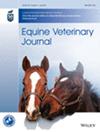Manual versus reciprocating endodontic debridement of equine cheek teeth: Micro-computed tomography findings
Abstract
Background
In orthograde endodontic treatments, different methods are available to debride the pulp canals of endodontically compromised equine cheek teeth, but their efficacy is unknown.
Objectives
To explore and compare the efficacy and anatomical changes caused by manual versus reciprocating filing techniques in equine cheek teeth, to explore the presence of instrumentation mishaps described in human dentistry and to explore anatomical complexities of the pulp cavity that often remain uninstrumented using microcomputed tomography (μCT).
Study design
Ex-vivo randomised experiments.
Methods
Twenty-two extracted healthy equine cheek teeth were randomised into two groups: debridement with nickel-titanium (Ni-Ti) manual H-files and debridement with Ni-Ti reciprocating K-files. All canals of all teeth were instrumented by a single clinician and μCT scans made before and after instrumentation were digitally analysed to compare the change in pulp volume, loss of dental material, percentages of instrumented pulp canal wall at three levels, instrumentation times and instrumentation mishaps between both techniques. The data were analysed using either an Independent samples T-test or Mann–Whitney U-test with p < 0.05 denoting a statistically significant difference.
Results
The use of reciprocating files resulted in a statistically significant advantage at apical levels when it comes to the percentage of instrumented root canal surface (p < 0.01; reciprocating mean 12% ± 6; manual mean 3% ± 3). No other significant differences were found between the methods. Instrumentation mishaps were detected in this study and were equally distributed between the two groups. Frequently uninstrumented regions consisted of intercanal communications, root canal branches, narrow corners of pulp canals and branches of pulp horns.
Main limitations
Convenience sample, use of healthy cheek teeth, ex vivo debridement.
Conclusions
The debridement efficacy in equine cheek teeth is generally poor with a slight apical advantage using reciprocating instruments. Instrumentation mishaps should be kept in mind when performing endodontic procedures in the equine patient.

 求助内容:
求助内容: 应助结果提醒方式:
应助结果提醒方式:


